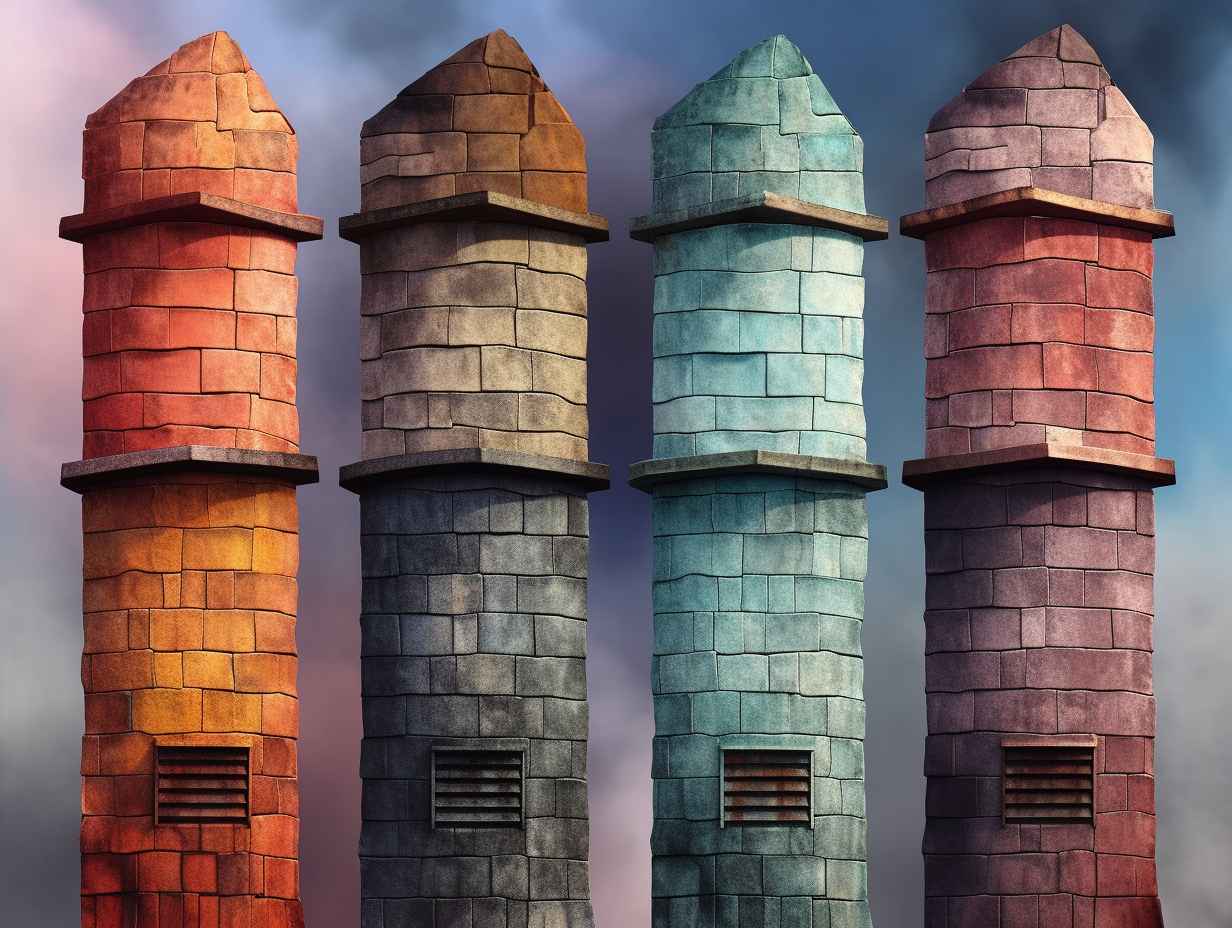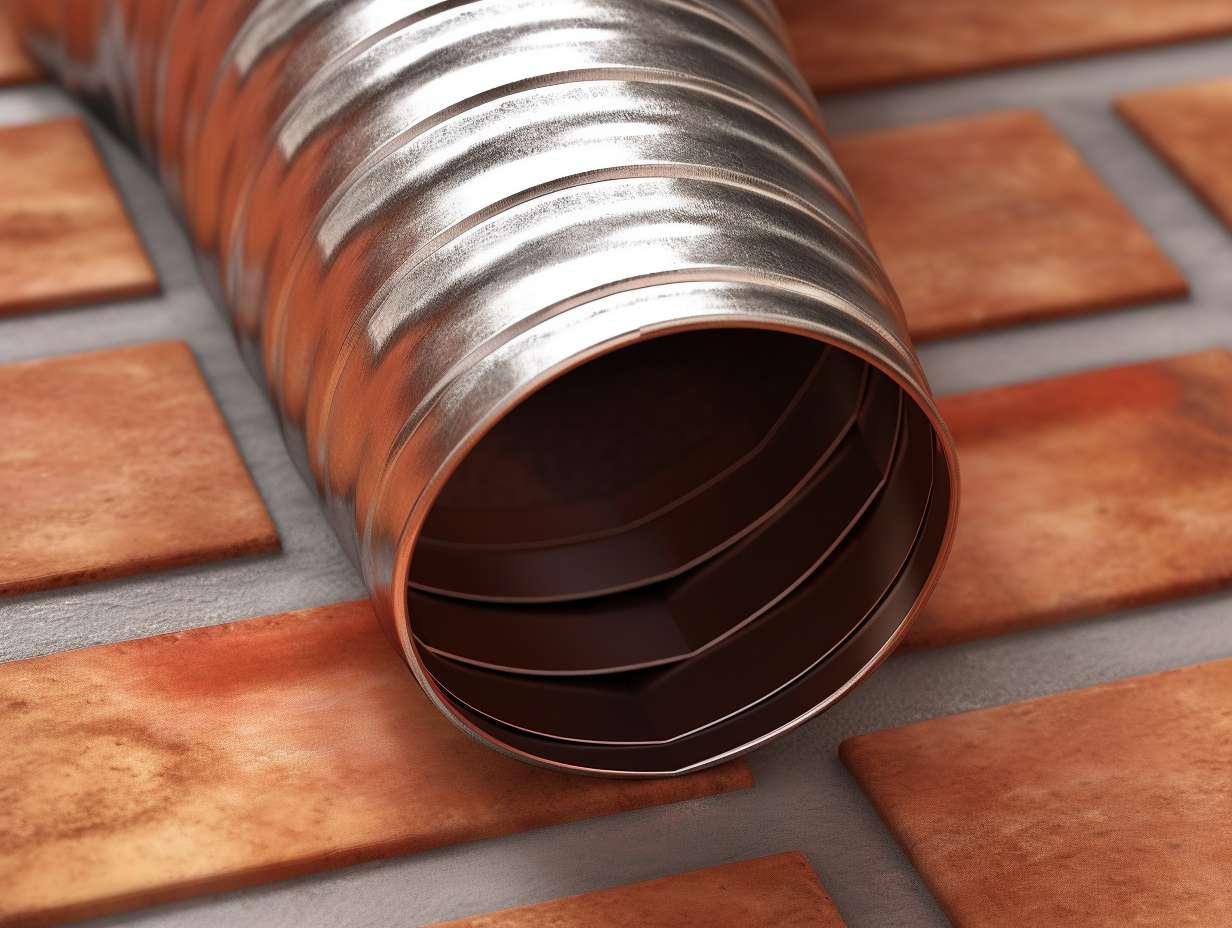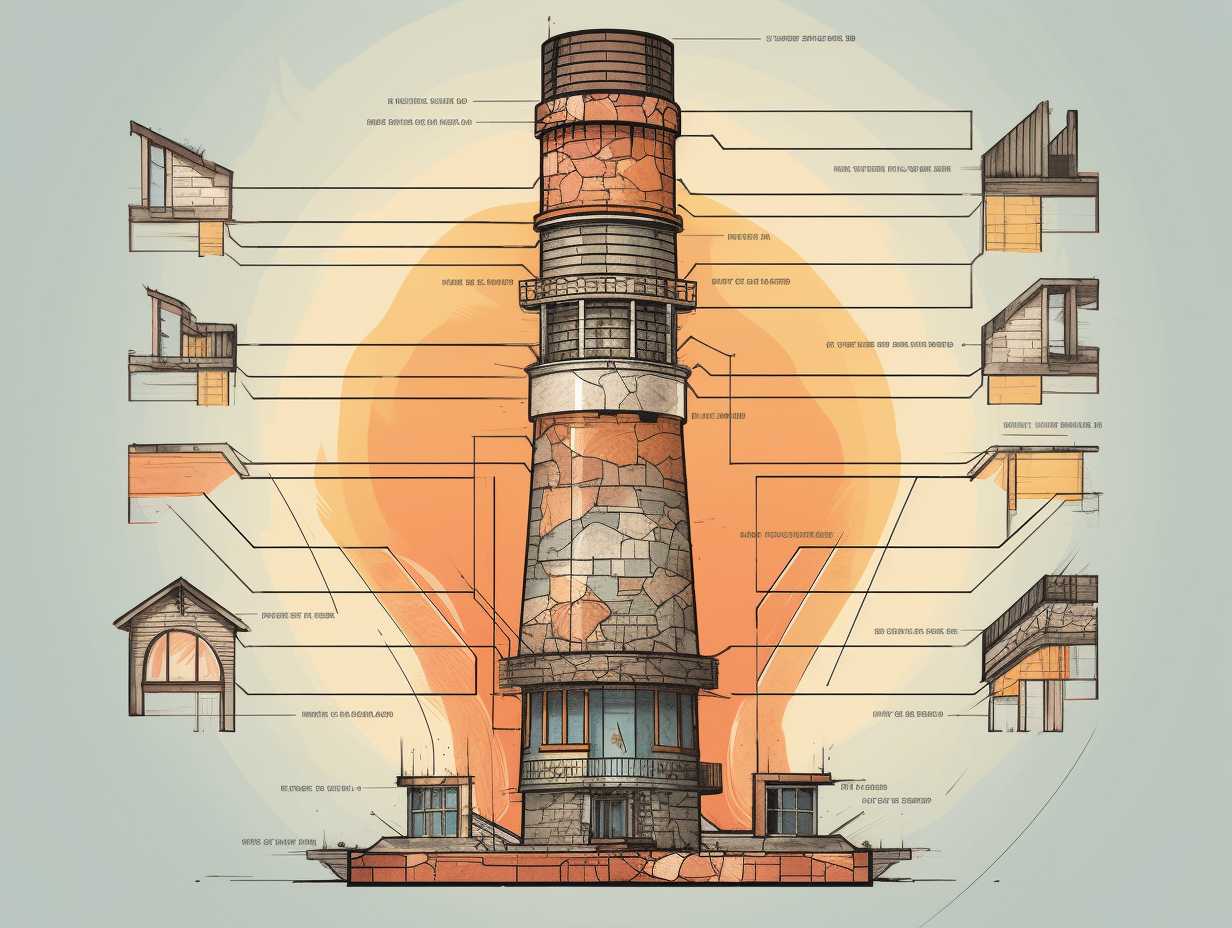
Shielding Your Chimney: Lining Techniques
Table Of Contents
- The Importance of Proper Chimney Maintenance
- Understanding Chimney Liners and Their Function
- Traditional Clay Tile Liners
- Cast-In-Place Liners
- Metal Liners: Stainless Steel and Aluminum
- Flexible Chimney Liners
- Chimney Relining Processes
- Factors to Consider When Choosing a Chimney Liner
- DIY vs. Professional Chimney Lining
- Maintaining Your Chimney Liner for Longevity
- Frequently Asked Questions
- Conclusion

Are you aware of the importance of maintaining your chimney? Chimneys play a crucial role in removing smoke and dangerous gases from your home, but without proper maintenance, they can pose a serious hazard. One key aspect of chimney maintenance is ensuring that it is properly lined. A well-lined chimney protects your home from heat damage and prevents fire hazards.
In this article, we will explore the different types of chimney liners available and their functions. We will delve into traditional clay tile liners, cast-in-place liners, and metal liners such as stainless steel or aluminum. You will learn about the pros and cons of each type of liner so that you can make an informed decision when choosing one for your own chimney. Additionally, we will discuss DIY versus professional lining options and how to maintain your chosen liner for longevity. By the end of this article, you’ll have all the information necessary to make sure that your chimney is properly lined and shielded from potential dangers.
The Importance of Proper Chimney Maintenance

You can’t neglect the importance of properly maintaining your chimney if you want to ensure it functions efficiently and safely. Chimney safety is crucial, especially when it comes to preventing chimney fires. Over time, soot and creosote can build up in your chimney which can ignite and cause a fire. This is why regular cleanings are essential for keeping your home safe and avoiding costly damage.
Preventing chimney fires also means making sure that your chimney lining is in good condition. The lining protects the walls of your chimney from heat and corrosion, but over time it can crack or deteriorate. This can lead to dangerous situations such as carbon monoxide poisoning or the ignition of combustible materials around the chimney area. By investing in proper lining techniques, you can safeguard against these hazards and keep your home comfortable and secure for years to come.
Understanding Chimney Liners and Their Function
Now that we’re talking about chimney liners, let’s explore how these essential components act as the backbone of your chimney’s structure. Chimney liner types vary depending on the type of fuel used and the type of chimney in your home. The three most common types are clay tile, metal, and cast-in-place.
Clay tile is the traditional option but can crack over time due to extreme heat or cold. Metal liners are durable and can withstand high temperatures but may rust over time. Cast-in-place liners involve pouring a cement-like material directly into your existing chimney, creating a new liner within it. Regardless of which type you choose, proper installation is critical for safety and efficiency purposes. A professional installer will ensure that the liner fits correctly and seals any gaps or cracks that could allow dangerous gases to escape into your home instead of rising up and out through your chimney.
Traditional Clay Tile Liners

One may be interested to know that traditional clay tile liners are a popular option for many older homes due to their durability and affordability. These liners are made from high-quality, heat-resistant clay that can withstand the extreme temperatures generated by wood-burning stoves and fireplaces. They also have a long lifespan, with some lasting up to 50 years or more.
If you’re considering installing a clay tile liner in your chimney, it’s important to note that the installation process can be quite complex. It typically involves removing the existing chimney liner and carefully fitting the new tiles into place. This requires precision and attention to detail, as any gaps or cracks in the lining can lead to dangerous carbon monoxide leaks or chimney fires. However, if installed correctly, a clay tile liner can provide reliable protection for your home’s chimney system for decades to come.
Cast-In-Place Liners
Cast-in-place liners are created by pouring a cement-like mixture into the existing chimney and allowing it to harden, creating a seamless and durable lining. These types of liners are becoming more popular due to their benefits over traditional clay tile liners. One major benefit is that they provide maximum insulation, which can increase the efficiency of your fireplace or stove. Cast-in-place liners also have a longer lifespan than traditional clay tile liners, with some lasting up to 50 years.
The installation process for cast-in-place liners involves cleaning the chimney thoroughly before pouring the mixture in. Once poured, it takes about 24 hours for the liner to harden completely. Unlike traditional clay tile liners that may require multiple pieces, cast-in-place liners are created as one solid piece which means there are no joints or seams where creosote can build up and cause blockages. Overall, cast-in-place liners offer many benefits and should be considered when looking for a new chimney liner option.
Metal Liners: Stainless Steel and Aluminum

Metal liners, such as stainless steel and aluminum, offer a modern and durable alternative to traditional chimney liners that can greatly improve the safety and efficiency of your fireplace or stove. These liners are easy to install and provide excellent insulation, preventing heat from escaping through the walls of your chimney. They also help prevent creosote buildup, which can be a major fire hazard.
When it comes to installation techniques, both stainless steel and aluminum liners can be easily installed by a professional. The cost comparison between the two materials varies depending on factors such as length and diameter of the liner. Stainless steel liners tend to be more expensive than aluminum but offer better durability and longevity. Aluminum is a more affordable option but may not last quite as long in certain environments. Ultimately, it’s important to consult with a professional installer to determine which material is best for your specific needs and budget.
Flexible Chimney Liners
Flexible chimney liners are a popular choice for homeowners who want to upgrade their fireplace or stove. These liners are made of flexible stainless steel and can be easily installed in your chimney. The installation process is straightforward, and you can typically complete it in a single day with the help of a professional installer.
One significant advantage of flexible chimney liners is their cost-effectiveness. They are less expensive than other types of liners, such as rigid stainless steel or aluminum, making them an ideal choice for those on a budget. Additionally, they provide excellent insulation, helping to keep your home warm during the colder months while preventing heat loss and reducing energy bills. So if you’re looking to improve the efficiency of your fireplace or stove without breaking the bank, consider installing a flexible chimney liner today!
Chimney Relining Processes

There’s a common belief that chimney relining can be an expensive and time-consuming process, but in reality, there are several options available to homeowners. Chimney relining costs will vary depending on the type of liner you choose, but it’s important to consider the long-term benefits. A properly lined chimney can improve efficiency and prevent dangerous gases from entering your home.
While some homeowners may attempt a DIY chimney relining project to save money, this comes with significant risks. Improper installation or selection of materials could lead to serious safety hazards such as carbon monoxide poisoning or chimney fires. It’s best to hire a professional who has experience in selecting and installing the appropriate liner for your specific chimney needs. By investing in proper chimney relining techniques, you’ll not only protect your home and family but also avoid costly repairs down the road.
Factors to Consider When Choosing a Chimney Liner
When choosing a liner for your chimney, you’ll want to consider factors like durability and cost effectiveness. Here are some other things to keep in mind:
- Material: Liners can be made of stainless steel, aluminum, or clay tiles. Stainless steel is the most durable and long-lasting option, but also the most expensive. Aluminum is less expensive but not as durable. Clay tiles are an affordable option but require more maintenance.
- Sizing: The liner should fit properly inside your chimney. An improperly sized liner can cause drafting problems and increase the risk of fires.
- Insulation: Insulated liners help to prevent heat transfer between the flue gases and surrounding masonry. This helps to protect against damage caused by expansion and contraction due to temperature changes.
- Code compliance: Some areas have specific codes regarding chimney liners. Make sure to check with your local authorities before choosing a liner.
Consider these factors when choosing a chimney liner that meets your needs in terms of cost effectiveness and durability. It’s important to invest in a quality product that will last for years while still being affordable for your budget.
DIY vs. Professional Chimney Lining

If you’re not confident in your DIY skills, it’s best to leave chimney lining to the professionals and avoid biting off more than you can chew. Chimney lining is a crucial task that requires technical expertise, proper tools, and knowledge of building codes and safety regulations. While DIY chimney lining may seem like a cost-effective option, it can lead to costly mistakes or even pose a danger to your home.
Hiring professionals for your chimney lining needs ensures that the job is done correctly and safely. Professional chimney liners have the necessary training, experience, and equipment to install liners that meet industry standards and local building codes. They also offer warranties on their workmanship, giving you peace of mind knowing that any issues will be addressed promptly. Ultimately, investing in professional chimney lining services can save you time and money in the long run by preventing potential hazards or damage caused by subpar installations.
Maintaining Your Chimney Liner for Longevity
To ensure your chimney liner lasts as long as possible, you’ll need to regularly clean it and schedule annual inspections with a professional. Cleaning methods for chimney liners vary depending on the type of liner you have installed. For stainless steel liners, use a wire brush or nylon scrub brush to remove any creosote buildup. For clay tile liners, avoid using abrasive cleaners that could scratch the surface of the tiles.
Common issues with chimney liners include cracks or holes in the liner, which can cause dangerous gases like carbon monoxide to leak into your home. Regular inspections by a professional can help catch these issues before they become major problems. Additionally, make sure you are burning only dry, seasoned wood in your fireplace to prevent excess creosote buildup and potential damage to your liner. Finally, if you notice any signs of damage or deterioration in your chimney liner, contact a professional immediately to address the issue before it becomes more serious.
Frequently Asked Questions
How much does it typically cost to install a chimney liner?
Estimating the cost of installing a chimney liner depends on various factors such as material, length, and installation process. Generally, it can range from $1,500 to $5,000 including labor and materials.
Can a chimney liner be installed in an old, deteriorated chimney?
Don’t let an old, deteriorated chimney stop you from installing a liner. Chimney liner alternatives such as cast-in-place or insulated metal liners can be used. Regular maintenance and cleaning are crucial for longevity.
How often should a chimney liner be inspected for damage or wear?
You should schedule a professional inspection of your chimney liner at least once a year to check for signs of damage or wear that could compromise its safety and efficiency. Don’t wait until it’s too late!
Are there any government regulations regarding chimney liners?
Like a shepherd watching over their flock, the government ensures chimney liners are installed safely. Installation costs vary depending on materials used and complexity of installation. Stay compliant with regulations to protect your home and family.
Can a chimney liner improve the efficiency of a fireplace or stove?
Yes, a chimney liner can improve your fireplace or stove’s efficiency. It reduces drafts and helps to retain heat, which also improves the environmental impact. However, it may affect fireplace aesthetics.
Conclusion
So there you have it, a complete guide on how to properly shield your chimney with the right lining techniques. Remember, maintaining your chimney is crucial to keeping your home safe and reducing the risk of fire hazards. A well-maintained chimney liner not only protects against dangerous gases but also ensures optimal performance of your heating system.
With proper care and maintenance, your chimney liner can last for many years to come, giving you peace of mind knowing that your home is safe from harm. So go ahead and invest in the right type of liner for your specific needs, whether it be traditional clay tile, cast-in-place or metal liners like stainless steel or aluminum. And don’t forget to hire a professional if necessary for a job well done.
In conclusion, taking care of your chimney might seem like an overwhelming task at first glance but with the right knowledge and tools at hand, it’s easier than you think. So go ahead and give yourself a pat on the back for being proactive in protecting what matters most- your family and home! After all, having a well-maintained chimney is as important as having fresh air to breathe or water to drink - okay maybe that’s a bit of hyperbole, but you get the point!
Disclaimer: Some information is provided through AI. Users should always conduct their own research and consult with qualified professionals before making any decisions.Affiliate information declaration: We may earn revenue from the products referred on this page and participate in affiliate programs.


